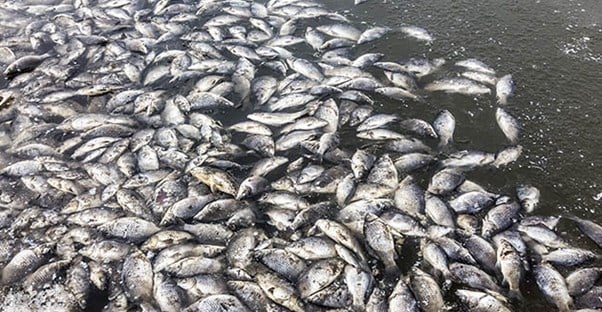The Gulf of Mexico is bracing for a significant environmental threat this summer as scientists predict a near-record “dead zone” where marine life cannot survive due to dangerously low oxygen levels. Spanning nearly 6,000 square miles—an area roughly the size of Connecticut—this year’s dead zone is set to surpass the average size by more than 600 square miles, according to the National Oceanic and Atmospheric Administration (NOAA).
Understanding Dead Zones
Dead zones are regions in aquatic environments where oxygen levels drop to such an extent that marine life struggles to survive. These dire conditions are primarily caused by excessive nutrient pollution, particularly from nitrogen and phosphorus, stemming largely from human activities such as agriculture and urban runoff. When these nutrients enter the water, they stimulate the growth of algae. As the algae blooms die and decompose, they consume oxygen, creating hypoxic (low-oxygen) conditions that are lethal to fish, shellfish, and other marine organisms.
Current Projections and Historical Context
NOAA’s warning highlights the severity of the situation in the Gulf of Mexico. Over the past 37 years, the average size of the dead zone has been approximately 5,200 square miles. This year’s projection of 5,827 square miles marks a troubling deviation from the norm. The largest dead zone on record, observed in 2017, reached nearly 9,000 square miles—an area roughly equivalent to the size of New Jersey—underscoring the cyclical nature and growing severity of this environmental phenomenon.
Causes and Contributing Factors
The increased size of this year’s dead zone is linked to elevated nutrient levels discharged into the Gulf through major rivers like the Mississippi and Atchafalaya. Recent data from the U.S. Geological Survey reveals that these river systems discharged approximately 5% more water than the long-term average in May. Moreover, nitrogen and phosphorus loads were significantly above average, with nitrate levels 7% higher and phosphorus levels 22% higher than the long-term averages observed for the same month.
These nutrients fuel the growth of algae, leading to massive algal blooms that subsequently deplete oxygen levels as they decay. The result is a catastrophic loss of habitat for fish, crabs, and other marine species that rely on oxygen-rich waters to survive and thrive.
Environmental and Economic Implications
The formation of such extensive dead zones not only threatens marine biodiversity but also poses significant economic challenges. The Gulf of Mexico is a vital fishing ground and supports a diverse ecosystem that sustains commercial and recreational fisheries. The disruption caused by dead zones can lead to fish kills, loss of habitats like coral reefs, and disruptions in the food chain, impacting fisheries and coastal economies dependent on healthy marine ecosystems.
Addressing the Crisis: Challenges and Solutions
Addressing the root causes of dead zones requires coordinated efforts at local, national, and international levels. Efforts to reduce nutrient pollution must be intensified, focusing on improving agricultural practices, implementing effective wastewater treatment technologies, and promoting sustainable land use management. Moreover, public awareness and advocacy are crucial in fostering greater understanding and support for policies that prioritize ecosystem health and resilience.
As NOAA’s dire warning underscores, the formation of a massive dead zone in the Gulf of Mexico is not just a local environmental issue but a symptom of broader global challenges related to nutrient pollution and climate change. Urgent action is needed to mitigate these impacts, protect vulnerable marine ecosystems, and ensure the long-term sustainability of our oceans.
In the face of growing environmental threats, proactive measures and international cooperation are essential to safeguarding the health and productivity of our oceans. The choices we make today will determine the health of marine ecosystems and the well-being of communities that depend on them for generations to come.
